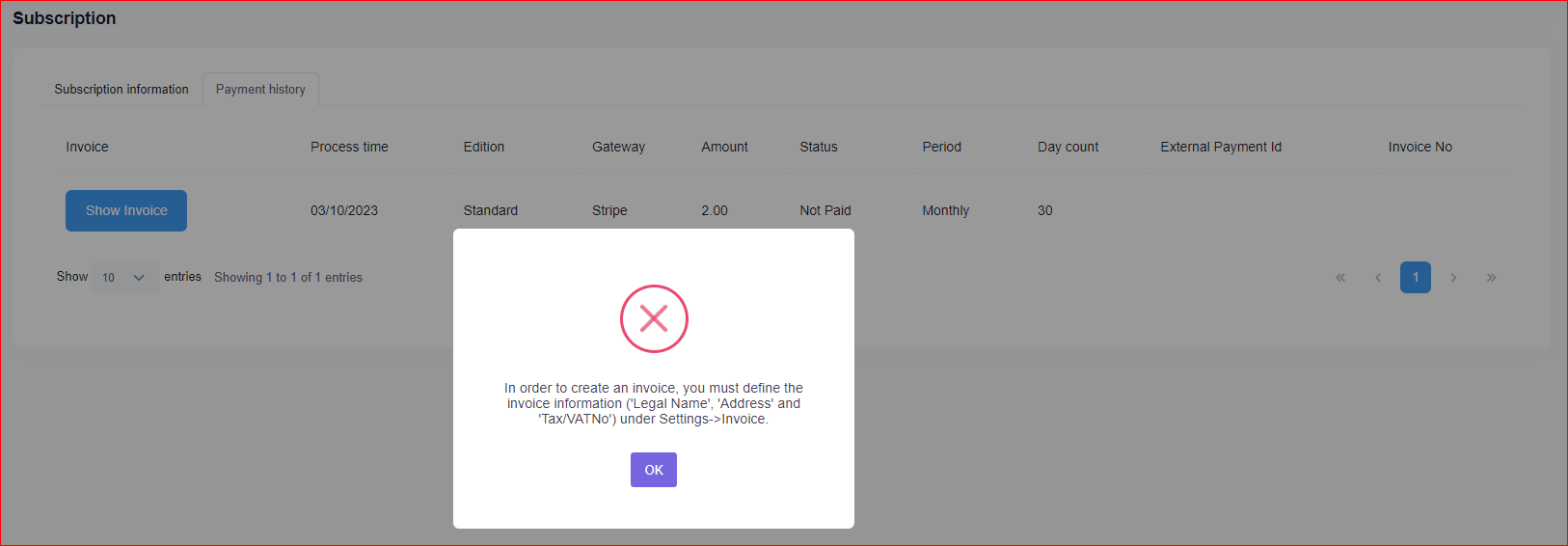I am working on an app that will allow both individuals and businesses, however, there is no requirement in the US to have people, even businesses enter their Tax ID's such as Social Security Numbers or Employer Identification Number. This is how I interpret the requirement to view and Invoice is to enter either SSN or EIN, which many will not due simply because of PII and Health data being saved.
Is there an alternative or what options can be used, specifically to automate this? Perhaps there is some logic that can be applied for US users since may will not know what a Tax ID or VAT number is.
Thoughts? I was hoping not to have to modify the source code for Invoices as to avoid too many conflicts with future released.
Perhaps this is more similar to "Sales Tax"? Each state within the US will have it's own tax amount for sales of goods, and then each county and city will sometimes have additional sales tax amounts for purchases. So perhaps that is the meaning of this field...to use perhaps a Zip Code for the US to identify tax nexus?
Some direction would be helpful here, or ideas.
Thanks.
Version: ASP.NET Core MVC & jQuery version 12.0.1
Looks like there are some changes required for Stripe integration to work. Stripe updated their API so line_items no longer work: https://stripe.com/docs/upgrades#2022-08-01
StripePaymentAppService.cs lines 188-192
Amount = (long) _stripeGatewayManager.ConvertToStripePrice(payment.Amount),
Name = StripeGatewayManager.ProductName,
Currency = myProjectConsts.Currency,
Description = payment.Description,
Quantity = 1
I changed them to this:
//Price = _stripeGatewayManager.ConvertToStripePrice(payment.Amount).ToString(),
PriceData = new SessionLineItemPriceDataOptions()
{
UnitAmount = _stripeGatewayManager.ConvertToStripePrice(payment.Amount),
Currency = myProjectConsts.Currency,
ProductData = new SessionLineItemPriceDataProductDataOptions()
{
Name= StripeGatewayManager.ProductName,
Description = payment.Description
},
},
//Amount = (long) _stripeGatewayManager.ConvertToStripePrice(payment.Amount),
//Name = StripeGatewayManager.ProductName,
//Currency = myProjectConsts.Currency,
//Description = payment.Description,
Quantity = 1,
Also on line 161 I added Mode:
{
Mode = "payment",
PaymentMethodTypes = paymentTypes,
SuccessUrl = input.SuccessUrl + (input.SuccessUrl.Contains("?") ? "&" : "?") +
"sessionId={CHECKOUT_SESSION_ID}",
CancelUrl = input.CancelUrl
};
Those changes seemed to allow me to use Stripe, but during testing I was provided a new error message.

In the US, we do not use Tax/VATNo for most transactions, and never for personal transactions. In this case, someone simply signing up for service as a user, not a business.
What can be done here to avoid this error? I am thinking just modify the existing code for InvoiceAppService to exclude Tax info and passing the users name and address from Stripe, but I wasn't sure if I was missing something that may make this a bit easier...like a const setting perhaps?
Thoughts?
On version 12.0.0, Asp.Net Core MVC/jQuery.
The latest release has a bug with the login page. When clicking on "Change" to switch tenant, nothing happens. The URL simply appends a "#".
Example: https://localhost:44302/Account/Login#
Tested on version 11.3.0 and the function worked correctly.
Any thoughts?
Started with new installation of ANZ following getting started guide. Branch from Dev to new branch. Ran and tested before using Power Tools...all was good,
Simple Contacts entity, all strings, very simple, git an error at the end:

Build solution resulted in some errors:

Navigation placed in wrong location:
 * manually fixed.
* manually fixed.
Is this normal behavior is using the root option in Power Tools? Is the error message something I can fix with config changes in Power Tools?
The build worked after my manual fixes, but not sure if there will be adverse effects.
Not sure if this is documented anywhere so I did my best to get this working, however I am not sure it is a valid method or if it will break during upgrades in the future. There appears to be some missing information around authenticating/registering new users with OpenID and Azure AD.
Here are my steps I created in our Wiki, let me know if I need to consider modifications that may be best suited for the future of this framework (I have not tested in our test environment yet):
To utilize Azure AD authentication and user registration with OpenID connect, we had to enable social logins in our ANZ app, register a new application Azure AD, enable OpenID in ANZ app and fill in custom details for OpenID, provide the Azure AD application with custom claims, and modify DefaultExternalLoginInfoManager class to support the correct username.
*Without making this change, you user will register with a MD5 value.